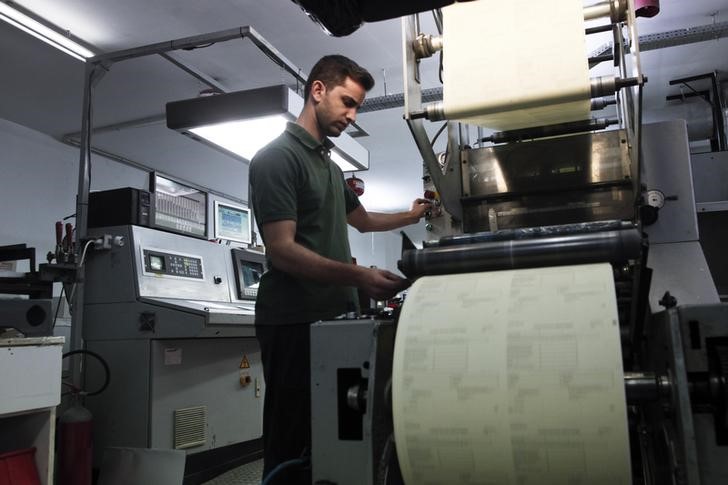Investing.com - Business activity in the U.S. private sector weakened in March, according to preliminary data released on Thursday.
In a report, market research group IHS Markit said that its composite purchasing managers’ index (PMI), covering both the manufacturing and services sectors, fell to 54.3 in March, from the prior reading of 55.8.
On the indices, a reading above 50.0 indicates expansion, below indicates contraction.
By sectors, the research group said that its flash services purchasing managers’ index (PMI) fell to 54.1 in March, from the prior month’s reading of 55.9.
Analysts had expected the reading to rise to 56.1.
Services make up approximately 80% of the U.S. economy which makes the data key for interpreting growth.
Furthermore, IHS Markit said that its flash manufacturing purchasing managers’ index (PMI) increased to 55.7 in March from the prior month’s final reading of 55.3.
Economists had estimated that it would rise to 56.0.
Despite the slight overall weakening in business activity, IHS Markit considered the data to represent another strong increase in private sector output, together with a further solid payroll gain and elevated price pressures.
“The flash PMI surveys indicate that the economy likely continued to expand at a robust pace in March, rounding off a solid opening quarter of the year,” IHS Markit chief economist Chris Williamson said in the report. This expert said the data points to first quarter GDP growth of 2.5%.
Williamson further noted that the employment index reached a nearly three-year high along with another strong payroll rise.
“The improved hiring trend reflects buoyant optimism regarding future growth,” he commented.
“Companies’ expectations for output in the year ahead remained elevated, dipping slightly in services but surging to a three-year high in manufacturing,” this economist explained.
Additionally, Williamson noted that inflationary pressures were on the rise, with the average price charged for goods and services hitting one of its strongest rates since 2014.
“Furthermore, with factory costs showing the largest jump for seven years amid growing shortages of key inputs, inflationary pressures appear to be on the rise,” Williamson concluded.
